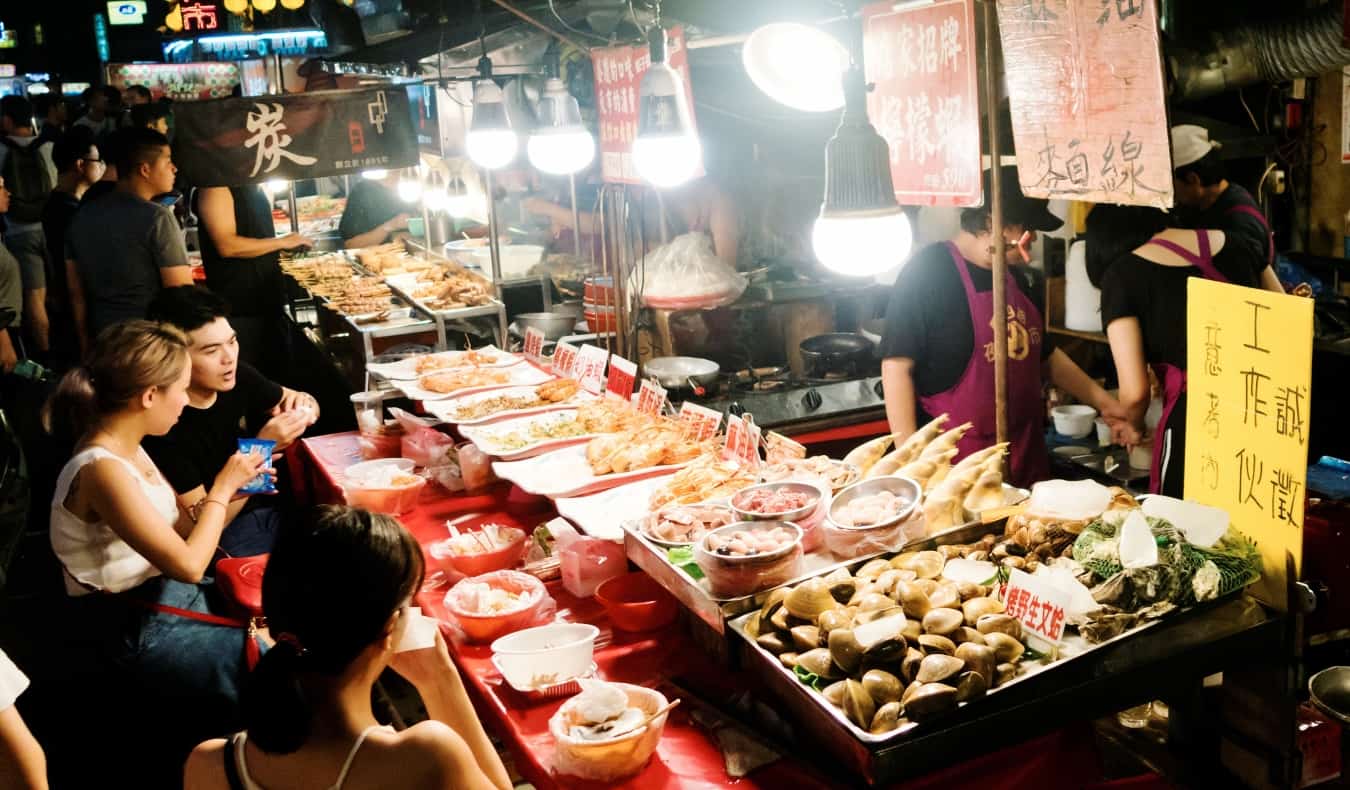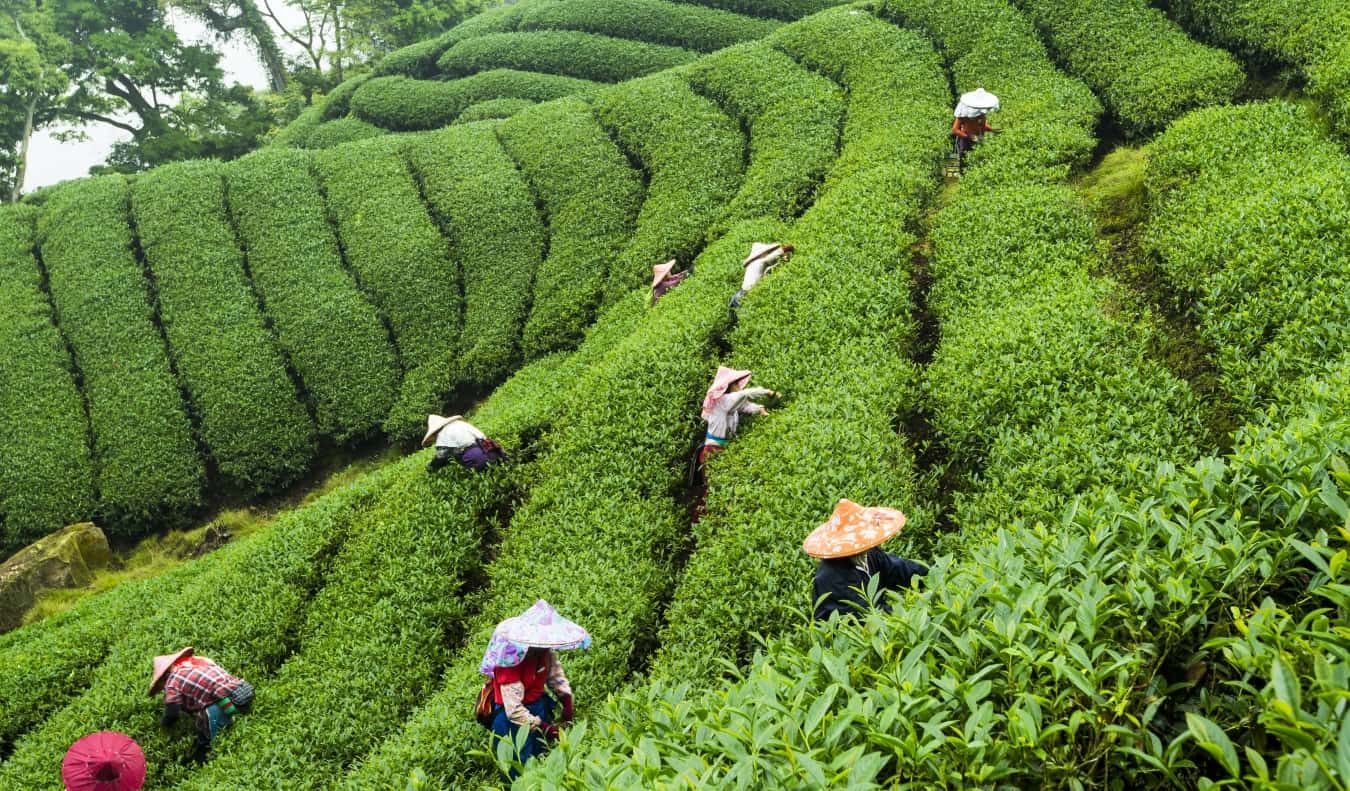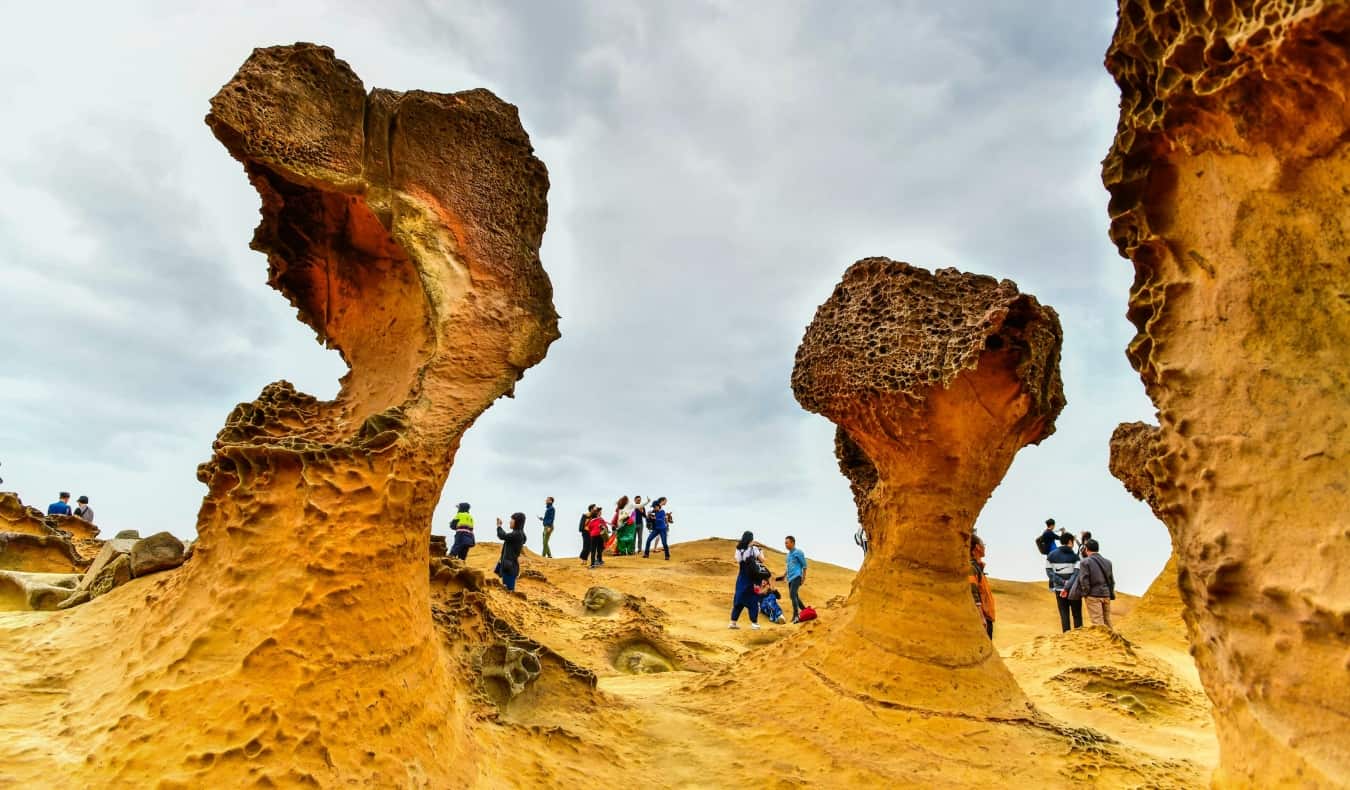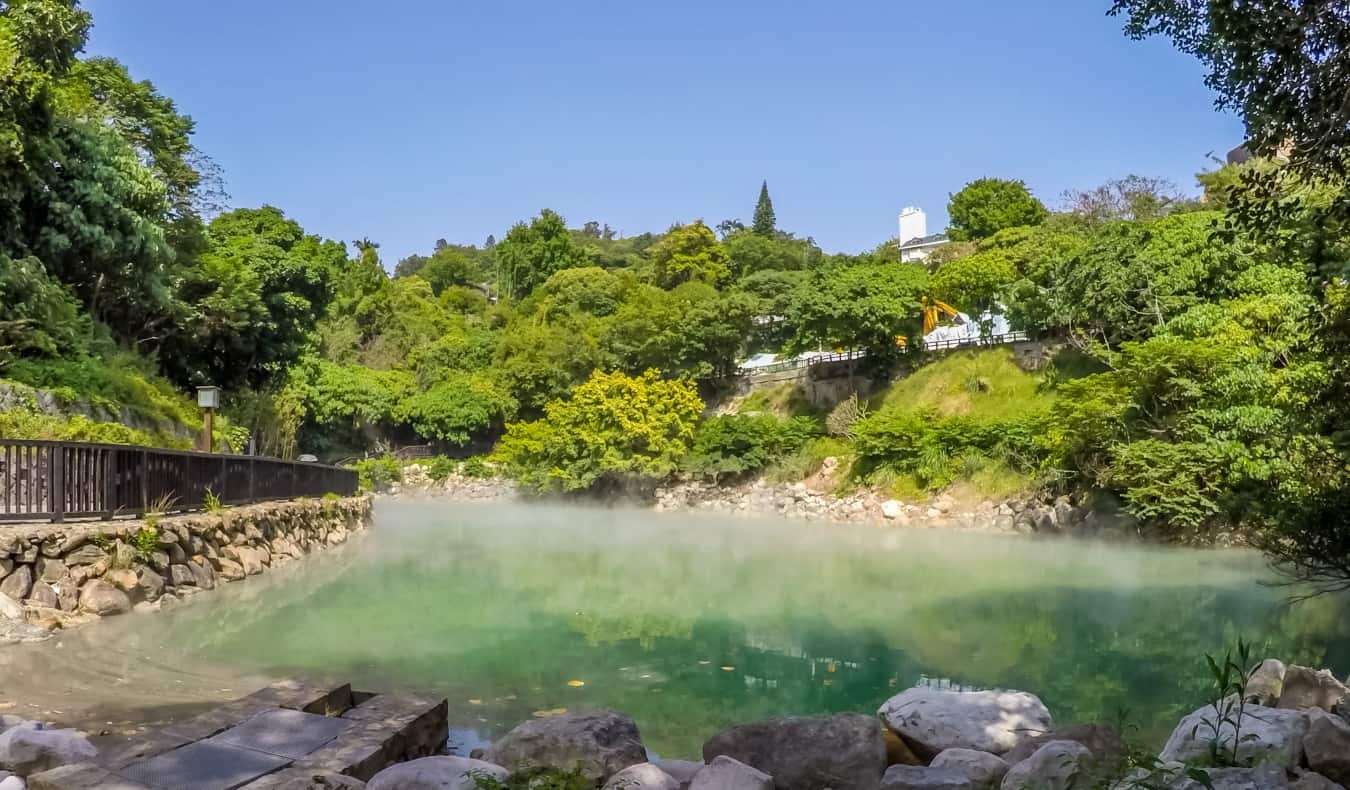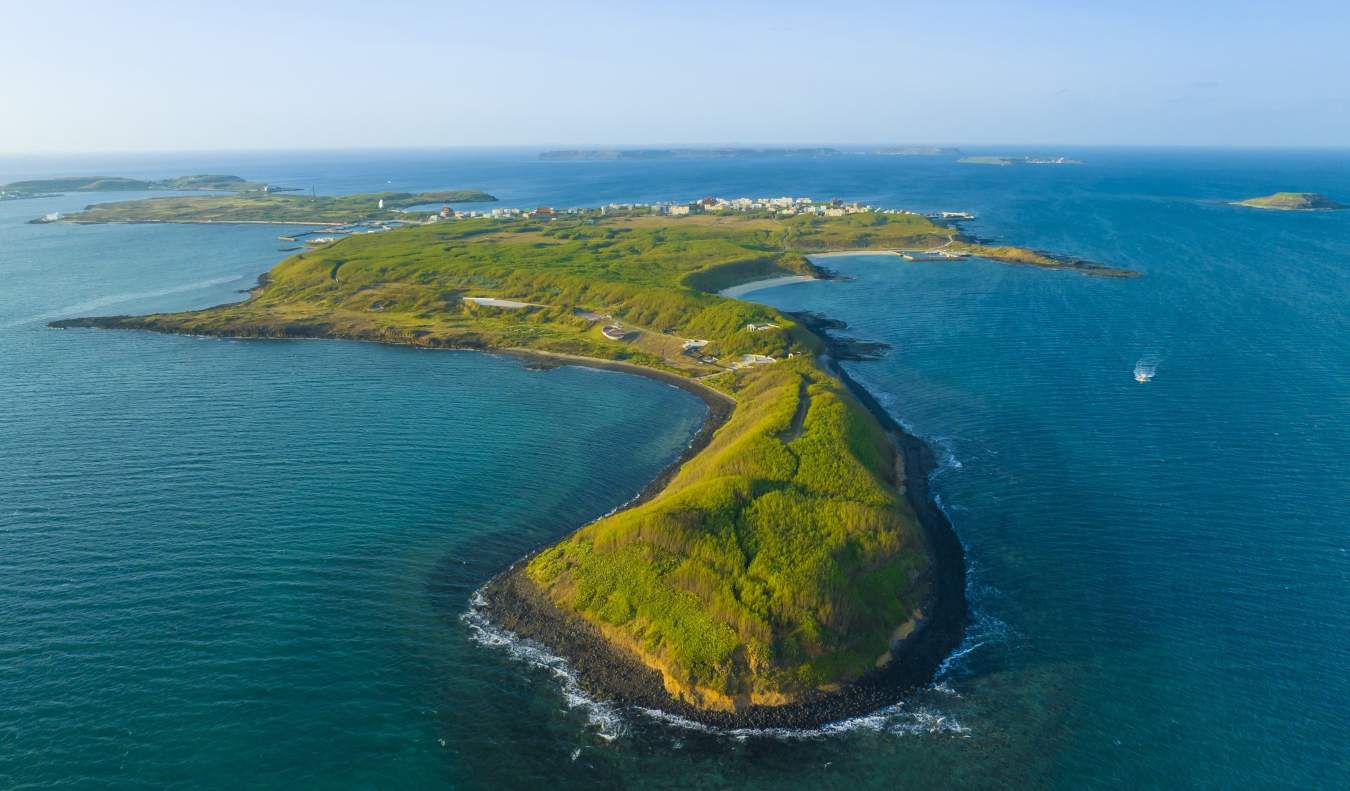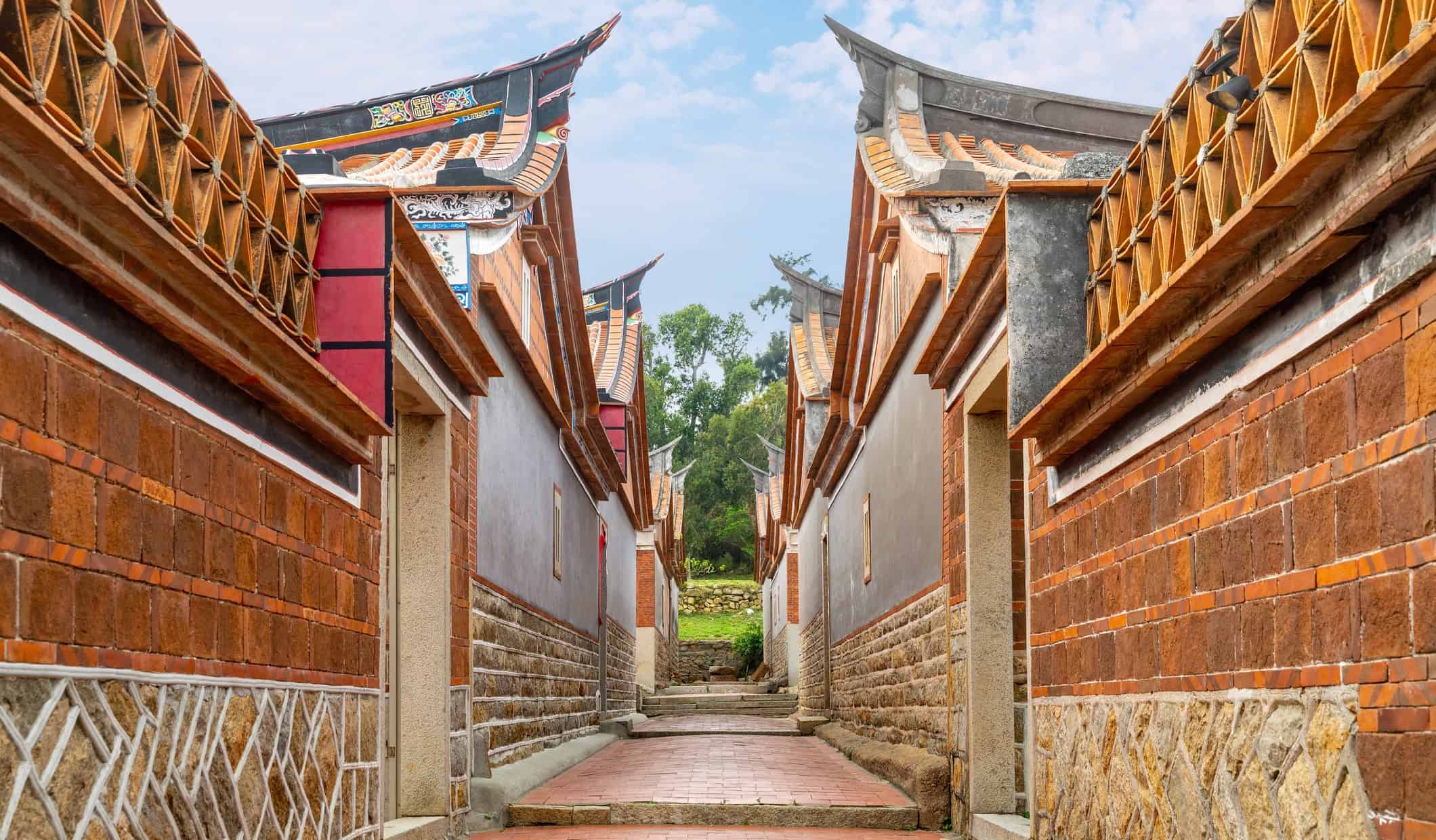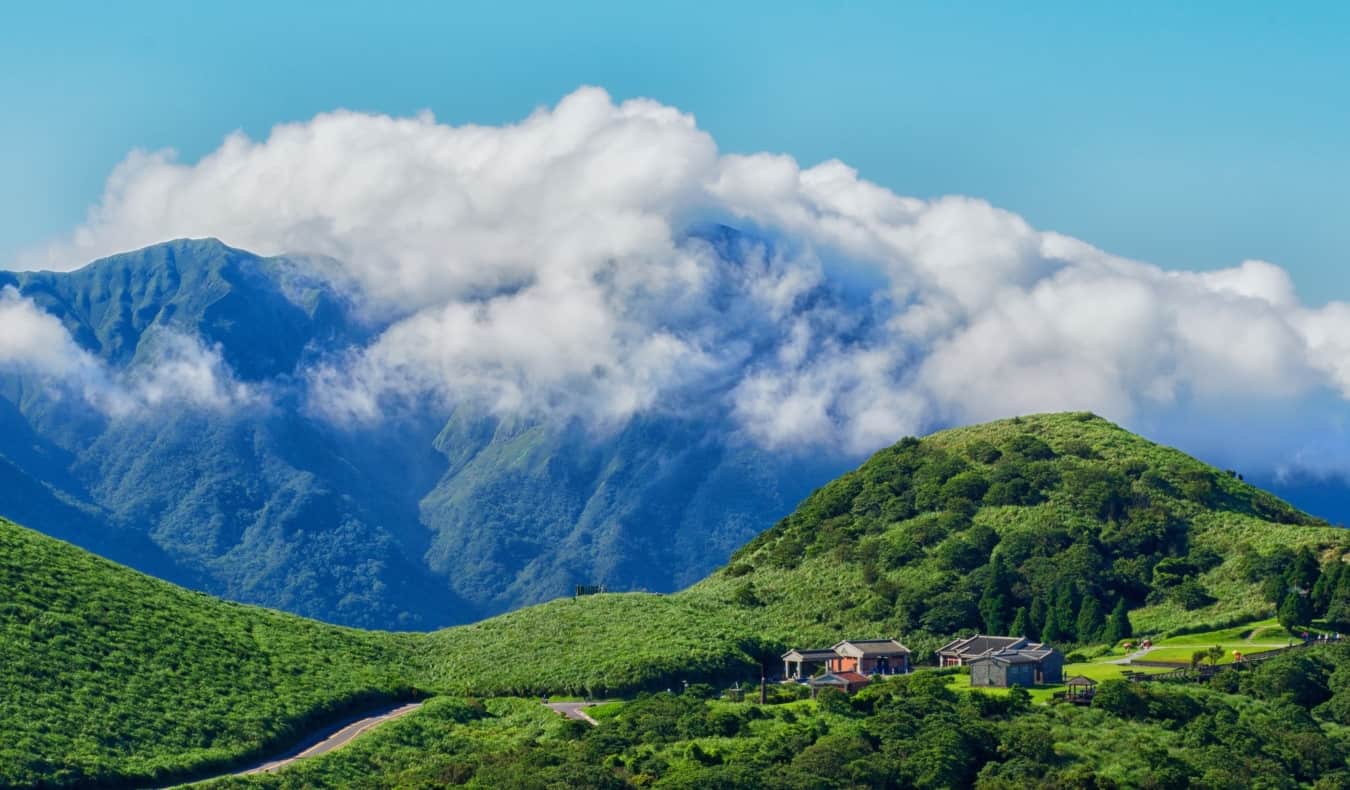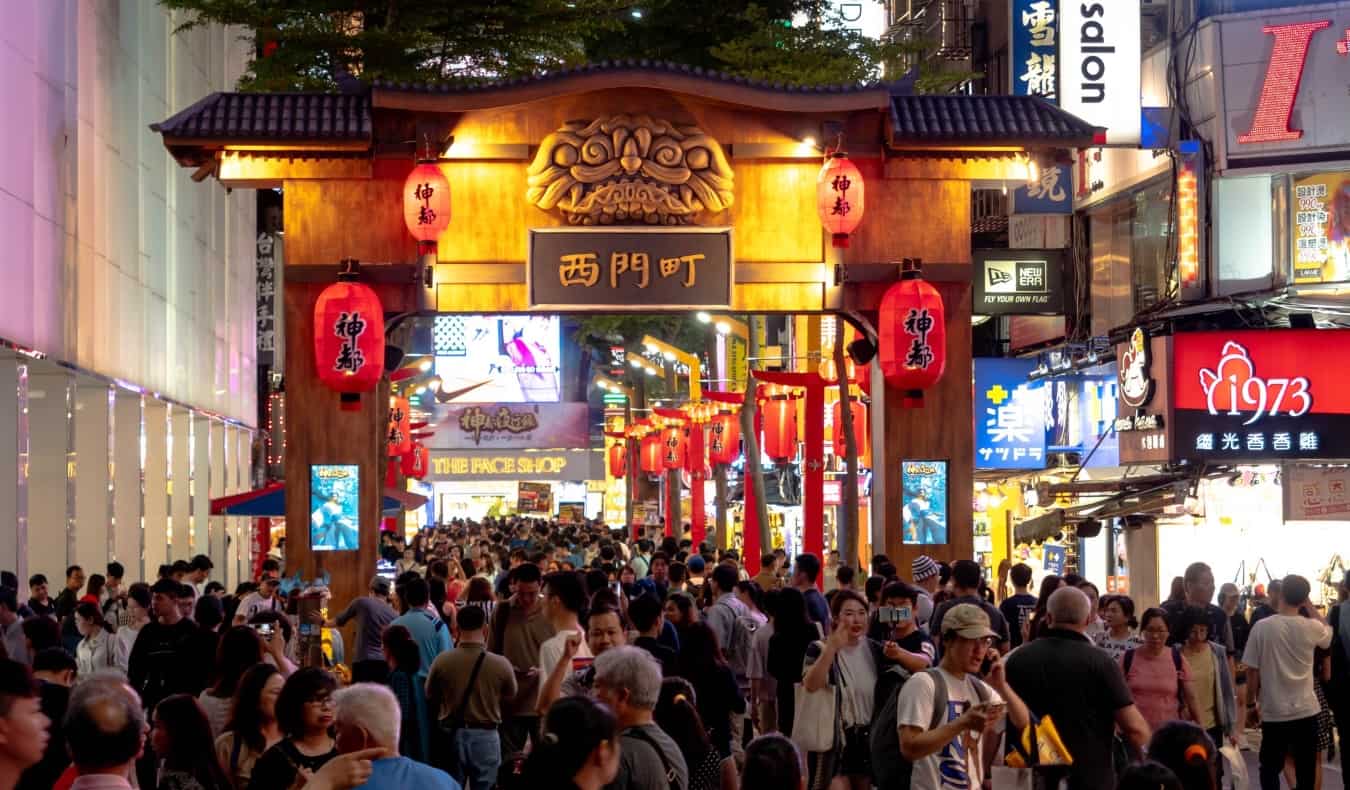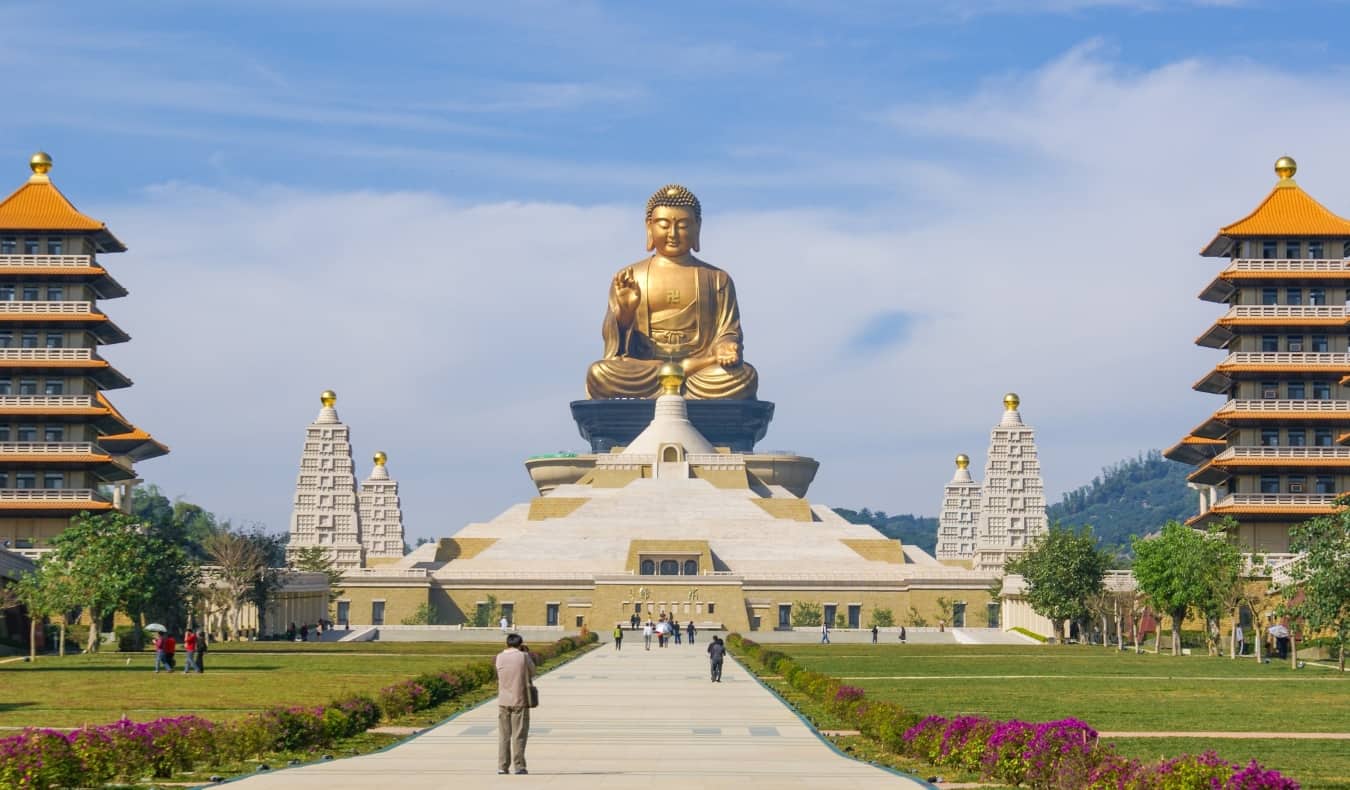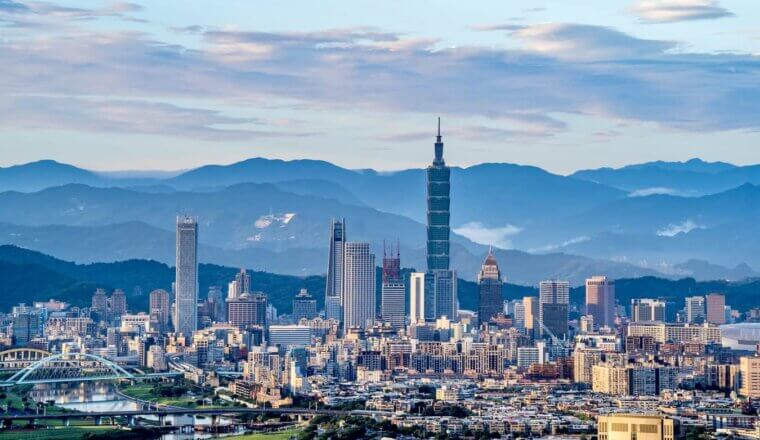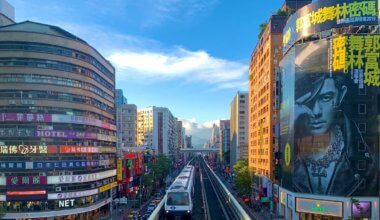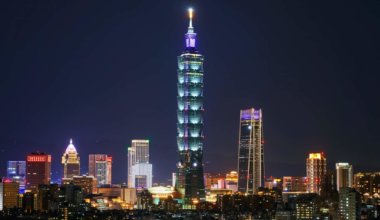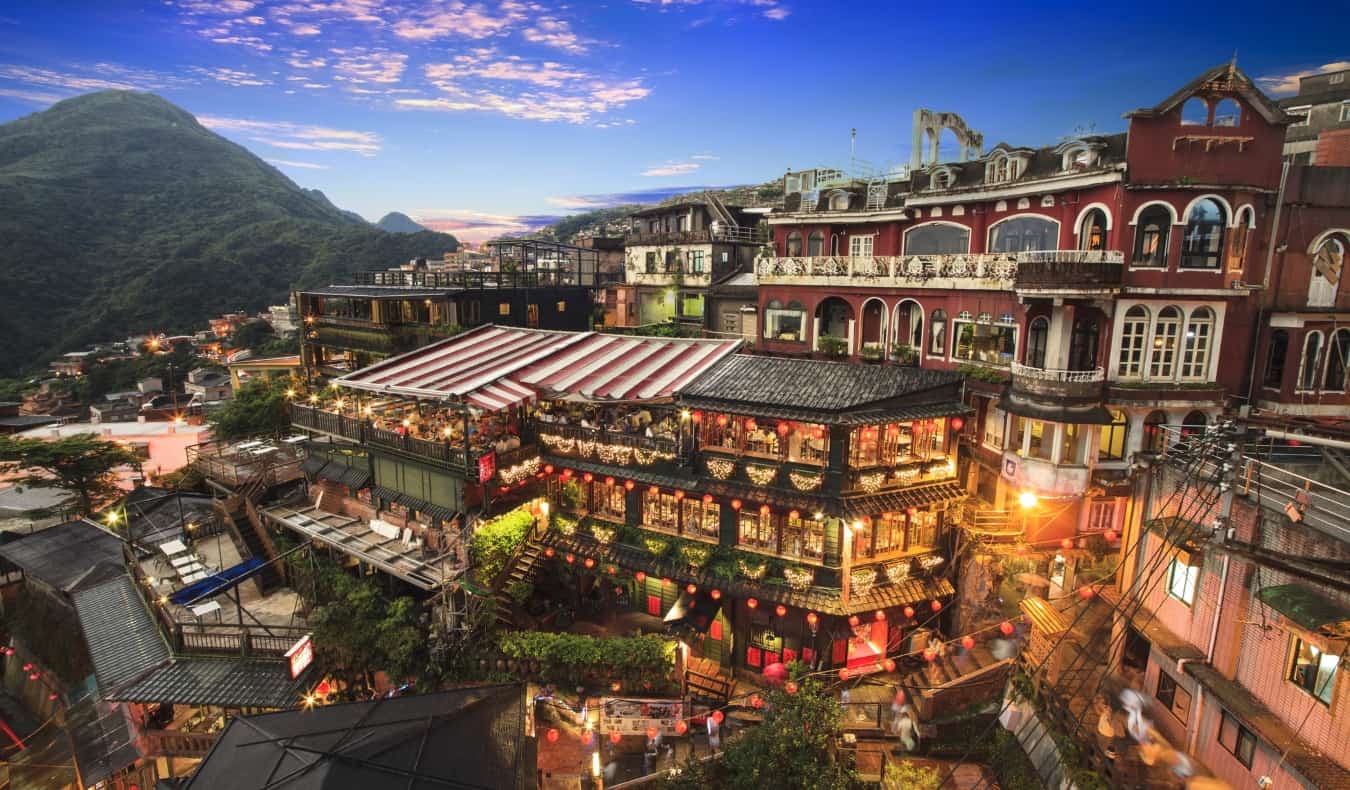
Last Updated: 11/6/23 | November 6th, 2023
I lived in Taiwan for a few months as an English teacher. I loved my time there and have always felt the country was really under-appreciated. Carrie Kellenberger is an expat who has been living in Taiwan for ten years. She runs My Several Worlds and in this guest post she lists out all the amazing things you should see and do there!
Every country in Asia is beautiful, but Taiwan is special for many reasons. The people are warm and hospitable, it’s incredibly budget-friendly, and, according to the UN’s yearly World Happiness Report, Taiwan consistently ranks as one of the happiest places in East Asia.
While it might be a small island, you would be amazed at the never-ending variety of sights and fun things to do here. With over a hundred mountain peaks above 3,000 meters (9,800 feet), over a hundred hot springs scattered around the island, both golden and black-sand beaches, nine national parks, world-class museums, glittering skyscrapers, stunning temples, and a huge number of night markets that are second to none, Taiwan has something that everyone can enjoy.
Here’s my list of the best things to do Taiwan to help you plan your trip and make the most of your visit!
Table of Contents
- 1. Eat, Eat Eat (Especially at the Night Markets)!
- 2. Experience Taiwanese Tea Culture
- 3. Check out the Northern Coastline
- 4. Hit the Beaches
- 5. Soak in the Hot Springs
- 6. Go Island Hopping
- 7. Visit Tainan, Taiwan’s Oldest City
- 8. See Old Taiwan
- 9. Get Off the Beaten Track on Orchid Island and Green Island
- 10. Explore the Mountains
- 11. Go Hiking in Taroko National Park
- 12. Head East
- 13. Witness Some Chaos
- 14. See Tianhou Temple
- 15. Explore Fo Guang Shan Monastery
- 16. Visit a Taiwanese Aboriginal Village
- 17. Take Part in the Pingxi Lantern Festival
1. Eat, Eat Eat (Especially at the Night Markets)!
The national pastime in Taiwan is eating. The island’s location and colonial history means that Taiwanese cuisine has developed over the centuries to incorporate elements from many different countries, but especially China and Japan. The evolution of Taiwanese cuisine continues to this day, as chefs here are very apt to experiment with flavors to create new fusion dishes.
There are over 30 night markets in Taipei, New Taipei, and Keelung (and over 70 night markets across Taiwan). My personal favorites are Shilin, Keelung, and Raohe Street in Taipei.
Don’t miss eating xiao long bao, also known as soup dumplings, a favorite staple food here. They are made out of a thin pastry folded into a type of bag that is then stuffed full with a meat-and-vegetable mixture and a tiny amount of soup, then garnished with raw ginger and soy sauce. Biting into one of these is a flavor explosion in your mouth.
If you’d like to really dive deep into the different sides of Taiwanese cuisine, take a guided food tour. On this food tour, you’ll first dine at the Michelin-starred Din Tai Fung (famous for their xiao long bao) and then experience the Raohe Street night market, all with a local guide.
2. Experience Taiwanese Tea Culture
Though indigenous tea plants existed here before Chinese colonization, for the most part, tea farming in Taiwan didn’t start until the 19th century when seedlings from China were first planted. Many varieties of tea are grown in Taiwan, but oolong is the most popular as it grows particularly well in Taiwan’s misty and mountainous environment.
The Taiwanese also have their own type of tea ceremony that takes elements from both Chinese and Japanese tea ceremonies while adding their own cultural flair. Here, tea ceremonies are less focused on the rules and more about bringing people together.
Jiufen, Jwu Jiu Teahouse, and Pinglin are some of the best places to visit if you want to sample tea and learn more about how it’s made. You can also ride the Maokong Gondola up a mountain to a secluded teahouse where you can take in the amazing views while enjoying some tea.
3. Check out the Northern Coastline
Head to the coast for some incredible lunar-like landscapes (that took thousands of years to form) at Yehliu Geopark. There are some unique, otherworldly rock formations, including one that looks like Queen Elizabeth that are popular tourist attractions. Try to get there early to beat the crowds.
Guided tours are also available. The benefit to these tours is that you’ll have someone explain what you’re seeing. Signage isn’t great. If you can, I would definitely recommend a guided tour.
4. Hit the Beaches
Beaches may not be the first thing that you think of when Taiwan comes to mind. But with almost 1,000 miles of coastline (it is an island after all!), a great beach is never that far away.
Each region of the country offers something different. For example, the north is best known for its golden and black-sand beaches, while Kenting on the southern tip of the island offers a lively beachside nightlife. White Sand Bay is the most popular and a great place to soak up the sun, swim, snorkel, or even go diving (just keep an eye out for jellyfish!). Other great beaches are South Bay and Little Bali Bay.
5. Soak in the Hot Springs
Taipei has its very own active volcano, and because of the volcanic activity in the area, Beitou Hot Springs enjoys a steady stream of visitors and locals who love to bathe in its healthy waters.
As part of the Taipei metro area, Beitou is easily reachable by metro. Prices start at 60 TWD per person for a soak in Beitou Public Hot Spring, making it a very affordable choice for anyone looking for some R&R. If you’d like to splash out, there are plenty of more upscale hotels and resorts too.
6. Go Island Hopping
While most people think of Taiwan as just the one main island (also known as Formosa), there are actually 168 Taiwanese islands in 7 different archipelagos. Most islands are quite small, but there’s a tremendous variety, from islands you can easily reach with a quick ferry from the main island, to others where you have to take a flight and it’s best to spend a few days.
The beautiful islands of Penghu just off Taiwan’s western coastline comprise the biggest archipelago and are especially well known for their golden beaches. All of the islands are distinct, and you can take a boat that will drop you off at one island for a few hours and then take you to the next one, so you can literally go from snorkeling to observing sea turtles to wandering through traditional villages made out of coral in a single day.
7. Visit Tainan, Taiwan’s Oldest City
This is Taiwan’s oldest urban area, established by the Dutch East India Company in 1624. Located in the south near Kaohsiung, Tainan was the capital of Taiwan from 1683-1887. There are all kinds of temples to visit here (don’t miss the Confucius Temple), several night markets, a historic old town, and a massive department store reminiscent of the Ginza district in Tokyo. There is also a nearby mangrove and wildlife reserve (it’s part of Taijiang National Park) just 30 minutes away by car.
8. See Old Taiwan
While Tainan may be Taiwan’s oldest city, if you want to see Old Taiwan at its best, head to the two groups of islands that make up the Kinmen Archipelago off the west coast of Taiwan, just a couple miles from mainland China. These islands have been the frontline of the ongoing tensions between the People’s Republic and Taiwan.
Additionally, you’ll be able to see historical military sites like underground tunnels and bunkers hidden in the countryside, and visit insightful museums to learn more about the unique history of the islands. The region is also known as being the producer of Taiwan’s famous gaoliang (kaoliang) grain alcohol, made from fermented sorghum.
9. Get Off the Beaten Track on Orchid Island and Green Island
Located just off the southeastern coast, these lush islands are a treat to visit. Here you’ll find hiking, swimming, and diving. The best way to explore these islands is by renting a scooter so that you can get further off the beaten path and have an adventure exploring at your own pace.
Green Island has amazing saltwater hot springs — one of only three such hot springs in the world! Orchid Island is home to the indigenous Tao people, Taiwan’s most isolated indigenous tribe. They’re best-known for their traditional hand-carved wooden canoes and underground homes.
10. Explore the Mountains
Covered in the most high mountains of any country (there are 268 mountain peaks over 3,000 meters/9,800 feet above sea level), Taiwan is the fourth-highest island in the world. Hiking these green, misty mountains is a national pastime, and a great budget-friendly activity as all of the country’s nine national parks are free. Hiking trails are plentiful and well-marked, so grab a scooter and head up into the mountains, which extend over five ranges the length of the island.
If you want to stretch your legs, climb to the summit of beautiful Jade Mountain and watch the sunrise (it takes two days to hike). This beautiful peak is almost 4,000 meters (13,000 feet) above sea level, giving it sweeping views in every direction.
Wuling Peak on Hehuan Mountain, around 3,275 meters (10,745 feet) above sea level, is another good hike for anyone looking to spend more time outdoors. But what really makes this place special is that the peak is so high, you can look down into a sea of clouds below!
11. Go Hiking in Taroko National Park
Ready for another city break? This national park covers 92,000 hectares (360 square miles) and offers visitors a chance to hike the numerous trails through mountainous terrain and dramatic gorges. You can stop to dip your feet in swiftly flowing mountain rivers and to marvel at the shrines and temples.
You can visit the park solo (which, if you’re staying in the nearby town, is easy to do) or as part of a full-day tour from Taipei. If you’re tight on time, the guided tour is the best option because it comes with transportation and a guide. Admission to the park is free.
12. Head East
To really enjoy Taiwan’s majestic beauty, don’t forget Taiwan’s eastern coastline like most international visitors do! The east coast highway has some of the most dramatic coastal scenery in the world, from plunging sea cliffs and splashing surf to beaches, nature reserves, and rural towns a world away from the big city.
For maximum flexibility, Taiwan’s East Coast is best explored on a road trip, though there are buses that go down the coast. There is also a train line that hugs the coast a bit when heading south from Taipei, though it then veers inland.
13. Witness Some Chaos
Check out the feeding frenzy of the markets in Taipei, or enjoy a stroll around cool Ximending, home to the country’s first and largest pedestrian zone. Bustling Ximending is Taipei’s answer to Tokyo’s Shibuya. As you stroll around, you’ll find all manner of shops filled with the latest fashion trends as well as themed cafes, quirky restaurants, and cocktail bars.
The center of the neighborhood is the Red House, a well-known cultural landmark and marketplace where local artisans sell their wares. The massive outdoor plaza behind it is the epicenter of the city’s LGBTQ scene and is surrounded by many different welcoming bars and shops.
Give yourself bonus points for checking out all the super cool street art; you won’t find it on the main thoroughfares, but if you venture onto some of the smaller side streets, you’ll soon find yourself in a world of brightly decorated alleys and lanes.
14. See Tianhou Temple
While you’re in Ximending, it’s worth stopping by one of the oldest temples in the city, Tianhou (also known as the Ximending Mazu Temple, after the in-house deity Mazu, goddess of the sea). Around since 1746, it’s one of three major temples in Taiwan from the Qing period. It’s located on a main thoroughfare but it’s very easy to miss the entrance.
Stepping through the entrance to this beautiful Taoist temple filled with mythological creatures, smoky incense, lucky goldfish, and people paying respect to the gods is truly a surreal experience. You’d never know this quiet oasis is in one of the busiest areas of Taipei!
15. Explore Fo Guang Shan Monastery
If you have your own ride in Kaohsiung, I strongly encourage you to stop by Fo Guang Shan Monastery and pay homage to the monks that live there. A Chinese Mahayana Buddhist monastery open to the public, the complex is massive (it’s the country’s largest monastery). In fact, everything here is massive, flashy, and surprisingly ostentatious for a monastery.
One of the central features of the complex is the Buddha Museum, which houses tooth relics of the Buddha himself along with various shrines, galleries, exhibitions, vegetarian restaurants, and even a Starbucks (really). Behind the museum lies the Great Path of Buddhahood, a broad pathway flanked by eight identical pagodas, leading up to the 108-meter-high golden Big Buddha.
I’ve been to many temples and monasteries in my lifetime, but this one takes the cake.
16. Visit a Taiwanese Aboriginal Village
If you can’t make it to Orchid Island (see above), there are plenty of other places to learn about indigenous Taiwanese tribes. The Formosan Aboriginal Culture Village near Sun Moon Lake is the most popular destination. It’s the largest outdoor museum in the country and is half cultural village, half amusement park. Each of the nine small villages in the park represent and are run by a different tribe. In each, you can watch cultural performances and see how a variety of traditional crafts are made.
17. Take Part in the Pingxi Lantern Festival
One of the coolest events in Taiwan, the Pingxi Lantern Festival involves releasing hundreds of paper lanterns into the sky. (Many newlyweds also include this meaningful tradition as a part of their wedding celebration.) If you don’t want to brave the crowds, you can easily purchase a lantern and light one on any of Taiwan’s beaches. This is one of the biggest events in all of Taiwan so be sure to get tickets in advance to avoid the ticket lines.
Taiwan is very environmentally friendly, so make sure you go with the eco-friendly paper lantern options that disintegrate, leaving no residue, and don’t cause fires. The company My Taiwan Tour also currently offers biodegradable paper lantern tours in Shifen.
There are many things about Taiwan that make it an incredible place to live; it’s easy to take some of those things for granted once you’ve been here for a while. I frequently hear that people think Taiwan is very Westernized, and while I agree that it is to some extent, there are still plenty of authentic Taiwanese experiences to be had!
Taiwan is and continues to be an unexpected travel destination that continues to delight visitors to this day. There is no place like it!
Canadian expat Carrie Kellenberger has been living in Asia since 2003. She moved to Taiwan in 2006 and became a permanent resident in 2012. She loves entertaining guests and travelers to Taiwan. You can read about her adventures and life there at her blog, My Several Worlds.
Book Your Trip to Taiwan: Logistical Tips and Tricks
Book Your Flight
Use Skyscanner. They are my favorite search engine because they search websites and airlines around the globe so you always know no stone is left unturned.
Book Your Accommodation
You can book your hostel with Hostelworld as they have the biggest inventory and best deals. If you want to stay somewhere other than a hostel, use Booking.com as they consistently return the cheapest rates for guesthouses and cheap hotels. Two of my favorite places to stay are:
Don’t Forget Travel Insurance
Travel insurance will protect you against illness, injury, theft, and cancellations. It’s comprehensive protection in case anything goes wrong. I never go on a trip without it as I’ve had to use it many times in the past. My favorite companies that offer the best service and value are:
- Safety Wing (best for everyone)
- Insure My Trip (for those over 70)
- Medjet (for additional evacuation coverage)
Looking for the Best Companies to Save Money With?
Check out my resource page for the best companies to use when you travel. I list all the ones I use to save money when I’m on the road. They will save you money when you travel too.
Want More Information on Taiwan?
Be sure to visit our robust destination guide on Taiwan for even more planning tips!
